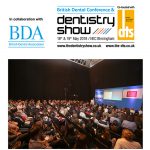Luke Moore, co-founder of Dental Elite looks at the process of deferred consideration and what it means for both parties involved.
If you’re interested in buying or selling a dental practice, you’re likely to have come across the phrase ‘deferred consideration’ at some point – but what does it actually mean? Well, deferred consideration is the term used to describe a common process in practice sales and acquisitions whereby a percentage of the purchase price owed by the buyer is retained until after the transaction is complete. The amount is then only released if the performance of the business is maintained to the agreed level, or whatever other metric has been agreed prior to completion has been achieved. Usually, the funds are held in the buyer’s account.
In recent years this has become a popular part of dental practice deals – especially when independent practices sell to corporates – with buyers seeking to mitigate some of the risk by ensuring that the vendor bears some responsibility for the output of the practice post-sale. For the seller, striking a deferred consideration deal can be a means of securing a sale or negotiating the purchase price at a higher overall consideration, in spite of there being a big unknown risk post-completion such as the continuity of an NHS contract. What’s key to remember is that the structure of the deal can be just as, if not more important than the ultimate sale price – let me explain.
Unlike with a straightforward sale where the money owed is tied to the completion of the sale, a seller continues to have a vested interest in the business long after the transaction ends. It might be that the deal is linked to a turnover target or the business’ post-sale EBITDA (Earnings Before Interest, Tax, Depreciation and Amortisation). In some instances, the vendor might be required to stay on in the practice as a part-time associate or adviser for a set period after the sale. Therefore, both parties need to take care when the deal is being structured to consider the long-term consequences of each option, and whether deferred consideration is the right path to follow.
Of course, in some instances, choices may be limited and compromise is inevitable. For vendors of large private practices or practices with short-term orthodontic contracts, for instance, who would prefer to acquire the full purchase price upon completion, it may be that a deal without deferred consideration is unattainable. In other situations, it can be hard to know whether a deal of £2.4m paid in full at completion is better than accepting £2.5m with deferred consideration of £450,000 over three years – depending on the practice’s performance.
One factor that should always be taken into account is what is deferred consideration linked to. For vendors, it is always advisable to accept a deferred element that is associated with individual turnover rather than the practice’s combined turnover or EBITDA. This is because once the practice is sold any control over associates’ retention and performance, as well as the cost structure of the business is relinquished to the buyer. If a vendor is considering staying on in the practice post-sale, caution should always be taken to ensure that sufficient protocols are in place to protect against illness and underperformance. Especially as some dental corporates impose strict tapering clauses, whereby for every £1 in turnover lost, £1 of the consideration is removed. Bearing in mind that the corporate will not have lost £1 in profit, as they would probably have only paid 45p of the £1 to deliver the treatment in the first place, underperformance could result in considerable losses. They will often also install a collar to the deferred consideration so if performance drops below a certain level then all the consideration is removed and there is no further tapering allowance.
Equally, a seller should be cautious of a scenario where the purchaser is unable to pay the agreed deferred consideration amount if the business fails or they’re unable to borrow any more money from the bank. If the buyer has other directors, they could be made personally liable in the sale agreement if obligations aren’t met. Alternatively, the seller could arrange to personally take charge over assets until the deferred consideration is paid off. There are ways and means of guaranteeing payment so a seller must be sure to hedge this risk.
Other than that, there’s an accounting principal of ‘present net values’ which vendors should give thought to if deferred consideration is on the cards. It’s relatively straightforward – because of unearned returns, there will be less spare cash for investment opportunities and as money in the bank is worth more than receiving a lump sum at a later date (if it’s accruing interest), it can be better to take the purchase price upfront in some situations. Though this will depend on what your expected rate of return is from your invested cash.
You should also consider that deferred consideration is different to that of a generic retention, which some purchasers try to exist on to mitigate against a potential warranty claim or a breach of indemnity. Unless the vendor is emigrating on completion or there is a specific reason to believe that one particular warranty will almost certainly be breached, retentions in dental practice transactions should be heavily resisted. They are, after all, very rare and normally un-commercial as most dentists continue to be of good financial means post-completion.
Ultimately, every practice transaction is unique, so it is always wise to seek professional, expert advice from a specialist agency that can help you to negotiate the best possible deal. With an unrivalled knowledge of the practice sales and acquisitions market and unwavering commitment to achieving optimal results, Dental Elite can advise you on all aspects of the process right down to the finest details so that no stone is left unturned.
It’s important not to leave anything to chance. To secure a good deal, be sure to surround yourself with appropriate support and expertise.
For more information on Dental Elite visit www.dentalelite.co.uk, email info@dentalelite.co.uk or call 01788 545 900














